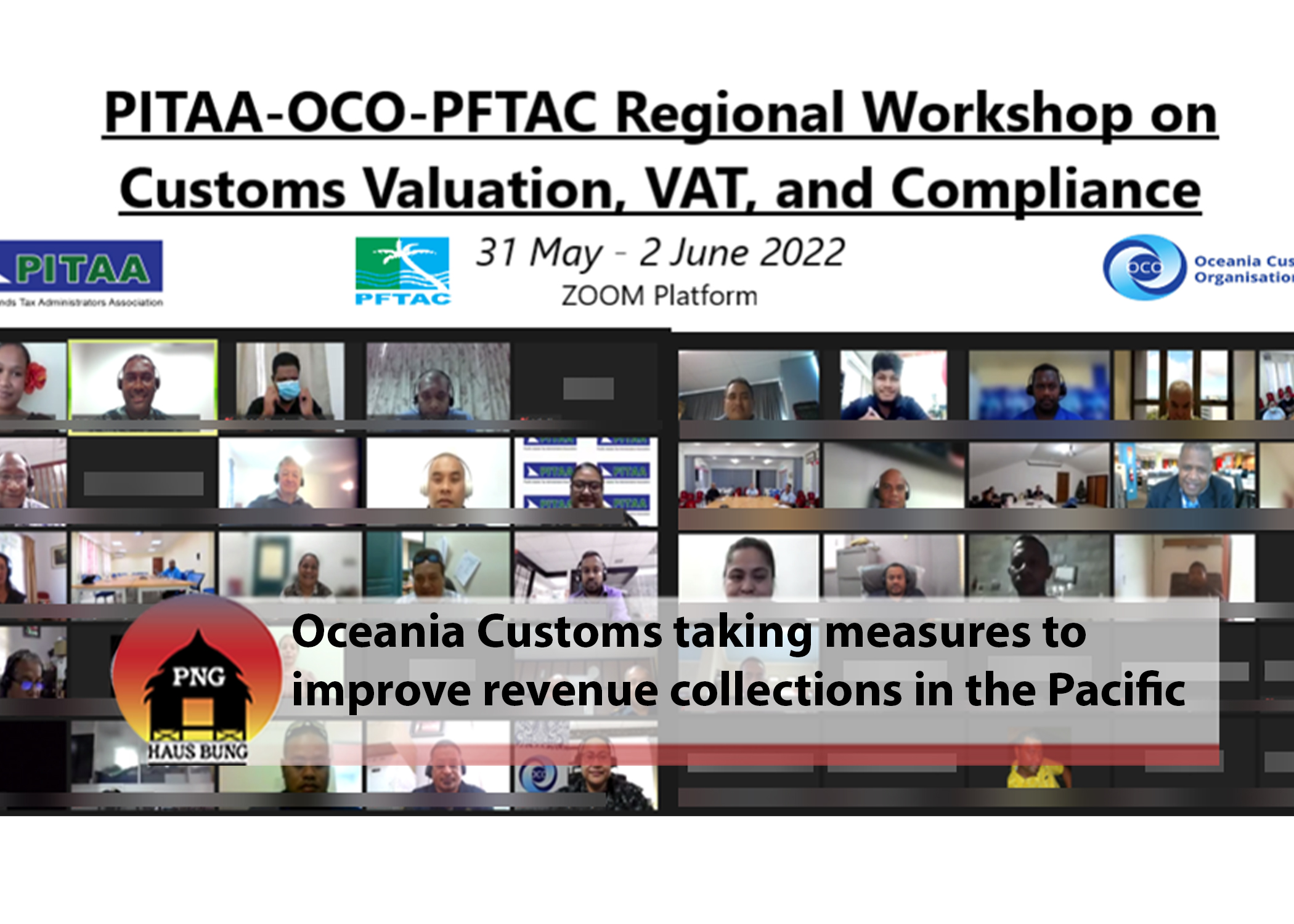Improving tax compliance in Pacific Island nations is one of the measures Tax and Customs administrations in the region are taking, to improve revenue collections which have been hugely impacted by the slow economic activities caused by the COVID-19 pandemic.
“Our members are at various stages of economic recovery, however, revenue collection from Tax and Customs administrations is still critical to fund the various arms of government machineries,” Oceania Customs Organization (OCO) Head of Secretariat Richard Brennan said. “If we are not effective in our collection, the government is affected and there is a trickle on effect- we all suffer.”
Pacific Island Tax Administrators Association (PITAA) Head of Secretariat, Koni Ravono emphasized the need for the region to work together to resolve common challenges.
“We all have a common problem caused by the COVID-19 pandemic but our challenge is that Tax and Customs administrations do not have the same capacity to resolve some of these problems,” she said. “That is why it is critical for us to work together, to help each other because the Pacific demands us of that.”
In recent weeks, OCO and PITAA supported by the PFTAC trained 77 officers from Cook Islands, Federated States of Micronesia, Fiji, Niue, Republic of the Marshall Islands, Papua New Guinea, Palau, Samoa, Solomon Islands, Timor Leste, Tonga, Tuvalu and Vanuatu this month, on strengthening the working relationship between compliance teams with particular focus on Value Added Tax (VAT), Customs valuation methodology, post clearance audit and compliance processes.
“We know that improving compliance will improve revenue collection. However, to improve compliance we need to first improve our internal processes and how we work with each other,” Mr Brennan said.
Officers were trained on improving information sharing to help in data collection as well as in the detection of tax avoidance.
Most island nations have had huge declines in their revenue collection, some like Fiji are recording almost 50 percent less than pre-COVID-19 levels.




